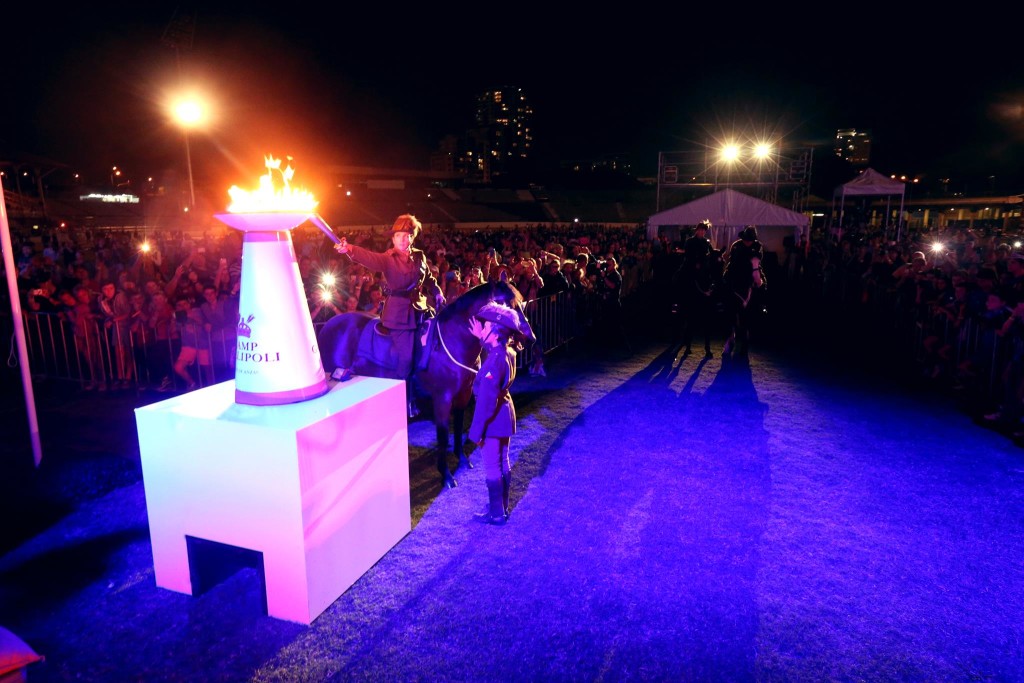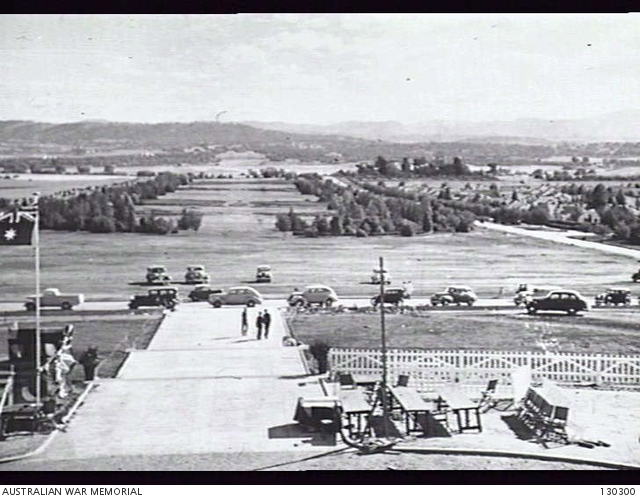[Links checked 17 November 2017 and all found to be live. Honest History may be able to help users track down resources where a link is broken. Please contact admin@honesthistory.net.au. HH]
Update 2 December 2016: Holocaust exhibition at War Memorial
The Australian War Memorial has opened a permanent exhibition on the Holocaust. Opening the exhibition, Director Brendan Nelson said:
The Australian War Memorial does not aspire to be one of the best museums in the world – it is. As such, we have a responsibility to tell the story of the Holocaust as responsible global citizens with a global outlook.
Honest History has been critical in the past of the Memorial’s unwillingness to put Australia’s wars in context. It welcomes this new initiative. It looks forward to further manifestations of global citizenship from the Memorial.
Update 22 November 2016: Top End Anzackery: an illustrated review note (featuring a mouse who flies a Spitfire)
Darwin schoolteacher, relatively recent Territorian, John Shield, marvels at the range of Anzac-related events – and plain Anzackery – available north of the Tropic of Capricorn.
Update 21 November 2016: Beyond Gallipoli is a collection of new perspectives
We review Beyond Gallipoli: New Perspectives on Anzac, edited by Frances and Scates, a collection of papers from a 2015 conference in Turkey. The emphasis is less on operational matters and more on cultural aspects, particularly from a trans-national point of view.
Update 11 November 2016: Known unknowns
Elsewhere on the site we are posting some material to mark Remembrance Day and the 75th anniversary of the opening of the Australian War Memorial. There is a long article from Richard Reid, reflecting on Remembrance Day and trying to bring individual stories to the fore. Then there is a link to the original newspaper report of the opening ceremony for the Memorial on Remembrance Day, 1941, along with Peter Stanley’s speech in 2001 on the 60th anniversary.
Moving on, we have a rather odd document calling to us from Remembrance Day 1951 and a story from 60 years later about support for the Memorial against some misguided competitors. Finally, there is from the Honest History archives a piece linking to a number of articles posted on our site over two years, commenting on the priorities and governance of the Memorial.
Then there is this, reproduced from our E-newsletter No. 39 of today’s date:
Known unknowns. (This is a compare and contrast exercise. Please read closely.) Prime Minister Keating’s speech on Remembrance Day 1993 at the interment of the Unknown Australian Soldier at the Australian War Memorial has become famous for the words, ‘He is all of them. And he is one of us’. These words were inscribed on the tomb in 2013, after considerable discussion and controversy over the proposed removal of the words ‘Known unto God’. (As it turned out, these words stayed.) War Memorial Director Brendan Nelson had foreshadowed the Keating change in a speech to the National Press Club in September 2013: ‘And at the end as you walk into the hall it will say “He is one of them, and he is all of us”’. (Keating’s speech and other material)
Update 27 October 2016: Australian War Memorial Annual Report 2015-16, another new exhibition and Story Time
A first quick look at the annual report, a note about some Ben Quilty paintings, and the predictable lack of interest at the Memorial in the centenary of the first conscription plebiscite.
Update 25 October 2016: Building the Ataturk Memorial in Canberra; Estimates Committee
Two articles (Part I; Part II) based on reminiscences of some of those involved, Australian government files, and a Turkish study using the files of the Turkish Embassy in Canberra. The articles track the different levels of interest from the two sides – Turkey keen, Australia not so much – and suggest that the building of the Ataturk Memorial was as much to do with foreign policy (particularly Turkish) as with commemoration.
Also a run-down on last week’s appearance at Senate Estimates by representatives of the Australian War Memorial and the Department of Veterans’ Affairs.
Update 21 October 2016: Conscription plebiscite centenary in Sydney, Melbourne and Canberra
Events to mark the centenary of the first conscription plebiscite on 28 October.
Update 20 October 2016: More on the speeches of Brendan Nelson
Part II of our analysis of the speeches of the Director of the Australian War Memorial. And Part I is here.
Update 16 October 2016: Tour operators gear up for 2017 and 2018 – but not on Cup Day in Melbourne
Falling off the back of a truck near us recently was this advice from the Department of Veterans’ Affairs about its seminars for tour operators taking groups to commemorative sites in 2017 and 2018. The advice was interesting for three reasons.
First, the Melbourne seminar was originally scheduled for Cup Day and had to be swapped with Brisbane when a punter pointed out that the first Tuesday in November was already spoken for. Rather ironic that planning for one sacred day had to be postponed because of another sacred day.
Secondly, we couldn’t help noticing that the schedule does not yet include a slot for the planned opening of the whizzo Sir John Monash Interpretive Centre at Villers-Bretonneux on Anzac Day 2018. Perhaps this is not surprising – Monash himself probably didn’t start making plans until closer to the time – though it does make the observer wonder whether DVA is hedging its bets in case les terrassiers français hit an unexpected obstacle or the centre’s much vaunted immersive technology sinks without trace.
Thirdly, it is interesting to compare the list of official commemorative occasions with the much longer lists that were around four or five years ago as potential dates for commemoration. We have been wound back to three Anzac Day services in each year (Gallipoli Dawn, Villers-Bretonneux Dawn, Bullecourt) plus services for the centenaries of Polygon Wood and Beersheba in 2017 and Le Hamel in 2018 and another at Villers-Bretonneux for the centenary of the Armistice. Times for a number of the services are yet to be confirmed and there is the obligatory typographical error at the foot of page 4.
Updates 11 October 2016: Fairly quiet on the Western District front (but Camp Gallipoli report received). New exhibitions at the War Memorial (and another important work). And by the way …
Fairly quiet on the Western District front (but Camp Gallipoli report received)
We at Honest History have been working hard on the Honest History book, so our Centenary Watching has been a bit curtailed in recent weeks. Fortunately, fellow worker, the Honourable Dan Tehan MP, Minister for various things, including the centenary of Anzac, and member for Wannon, down Hamilton-Portland way, has been fairly quiet, too, following his passionate intervention in the Long Tan commemoration imbroglio.
 Lest we forget Camp Gallipoli (Facebook)
Lest we forget Camp Gallipoli (Facebook)
Minister Tehan has recently, however, made a number of announcements on health initiatives for veterans, praised volunteer veterans helping other veterans, and marked the work of Australian merchant mariners and peacekeepers as well as anniversaries in both major wars and the Vietnam War. Also, on a matter that has been of interest to Honest History, the Minister released the KPMG report into Camp Gallipoli.
The report confirmed that $2.5 million of public money granted to Camp Gallipoli ‘had not been spent on items outside the terms of the grant’. There is a separate review under way at the Australian Charities and Not-for-profits Commission. Camp Gallipoli’s permit to use the word ‘Anzac’ remains revoked. Remaining allegations still to be dealt with by other authorities are listed on page 6 of the report. Previous Honest History material on Camp Gallipoli can be found through our Search engine.
Meanwhile, the Commemoration Branch of the Minister’s department has done some good work producing class materials for Year 9 on the conscription struggle during World War I. We have noted this in our ‘Divided Sunburnt Country’ series.
New exhibitions at the War Memorial (and another important work)
Due to other work, Honest History has not had time yet to have a look at (and, we hope) review the new exhibitions at the Memorial on Indigenous service in uniform, For Country, for Nation, and Australian involvement in the Middle East. There are a couple of opaque phrases in the advertising for the former that give hope that the Memorial may be taking an imaginative view of what ‘fighting for Country’ means. As for the more recent conflicts, we will be interested to see what the new exhibits say about why Australia was involved in Afghanistan and Iraq as well as about how well we acquitted ourselves. The new material includes a video by Chris Masters (Afghanistan: The Australian Story) of interviews with Australian Defence Force members.
We just discovered the other day a review by Nick Terrell of the Centenary Print Portfolio, a collection commissioned by the War Memorial and which ran quietly for three months earlier this year in a corner of Parliament House. Terrell describes the portfolio (of prints by various artists) as ‘a vernacular alternative to our formal ceremonies of remembrance’. It’s a thoughtful review of what seems to have been an interesting collection. We wonder where the collection is now.
And by the way …
We know some readers go first to this Centenary Watch column rather than to our updated home page, so we want to draw their attention to the announcement of the Honest History book, our analysis (Part I) of the speeches of War Memorial Director, Brendan Nelson, and our extended coverage (again, this is Part I), making use of an important Turkish source, of the tangled story of how Anzac Parade, Canberra, came to acquire its Atatürk memorial. If you have never heard of General Necdet Üruğ (pronounced oo-roor) and did not know of his role in Australian commemorative history, you will be enlightened.
 A view down what became Anzac Parade, 11 November 1941, opening day of the Memorial (AWM 130300/RS Conrow)
A view down what became Anzac Parade, 11 November 1941, opening day of the Memorial (AWM 130300/RS Conrow)
As for why we devote so much time to things to do with Atatürk, it is because the myth of the ‘Atatürk words’ (‘Those heroes that shed their blood …’) is a central part of the broader mythology of Anzac. As for why we are devoting so much attention to Dr Nelson’s speeches, it is because he is an important and frequent spruiker of the received version of Anzac. Honest History is trying to return Anzac to a proportionate place in Australia’s national story.
Finally, regarding Honest History’s Alternative Guide to the Australian War Memorial, it has now been downloaded 1645 times from our website and the presentation we gave on it to the Annual Conference of the History Teachers’ Association of Australia received an appreciative response. We noted a while ago that the Council of the Memorial had passed up the opportunity of a similar presentation.

